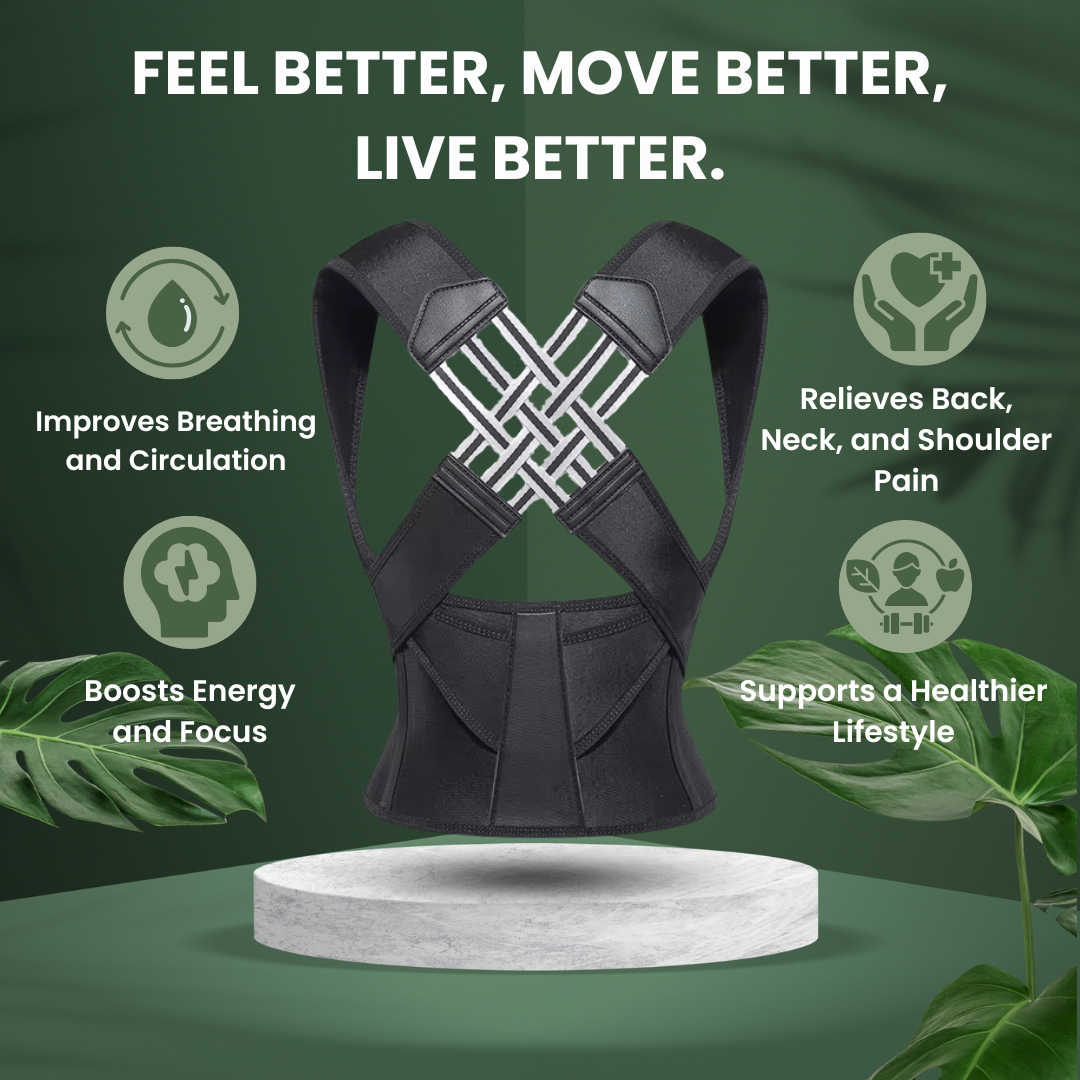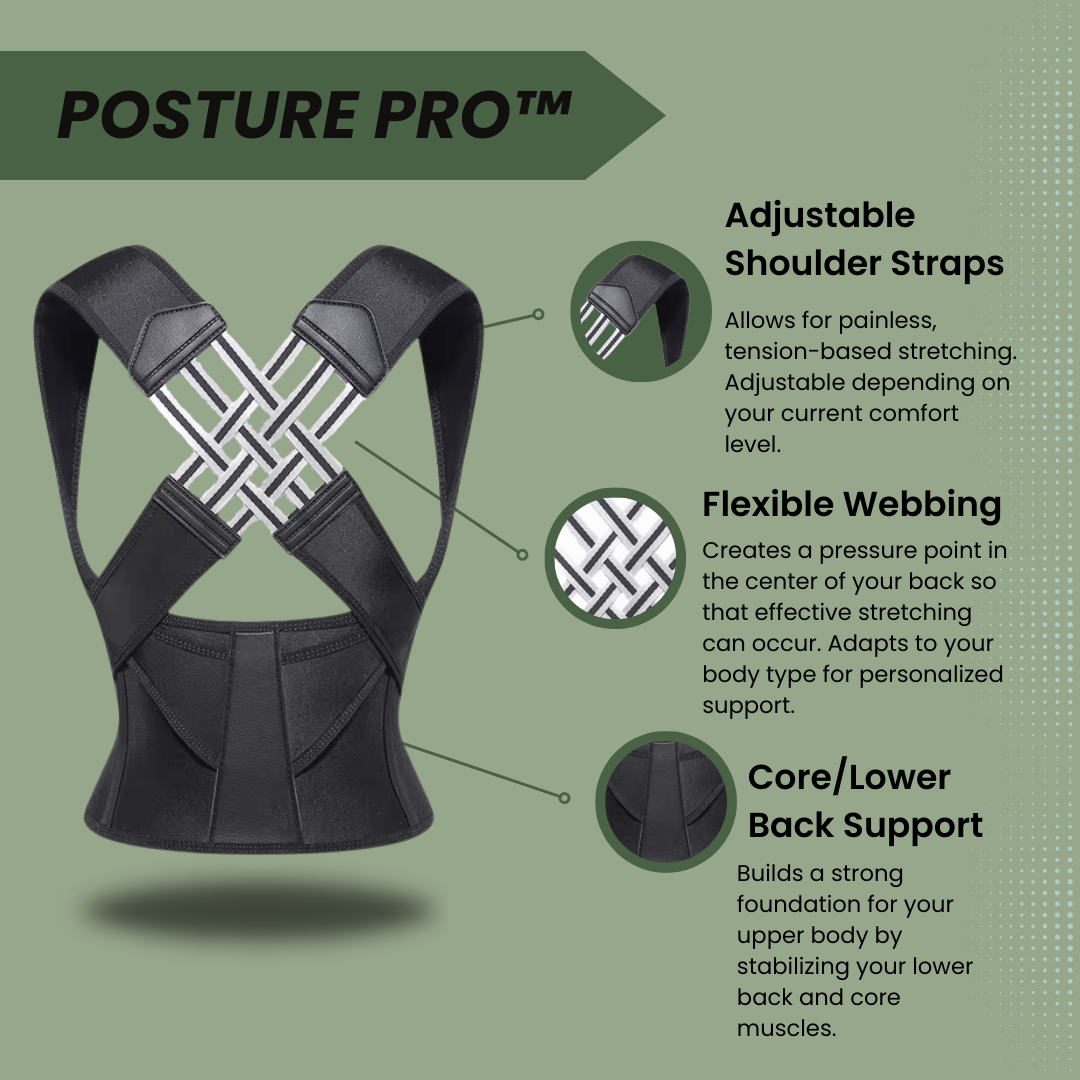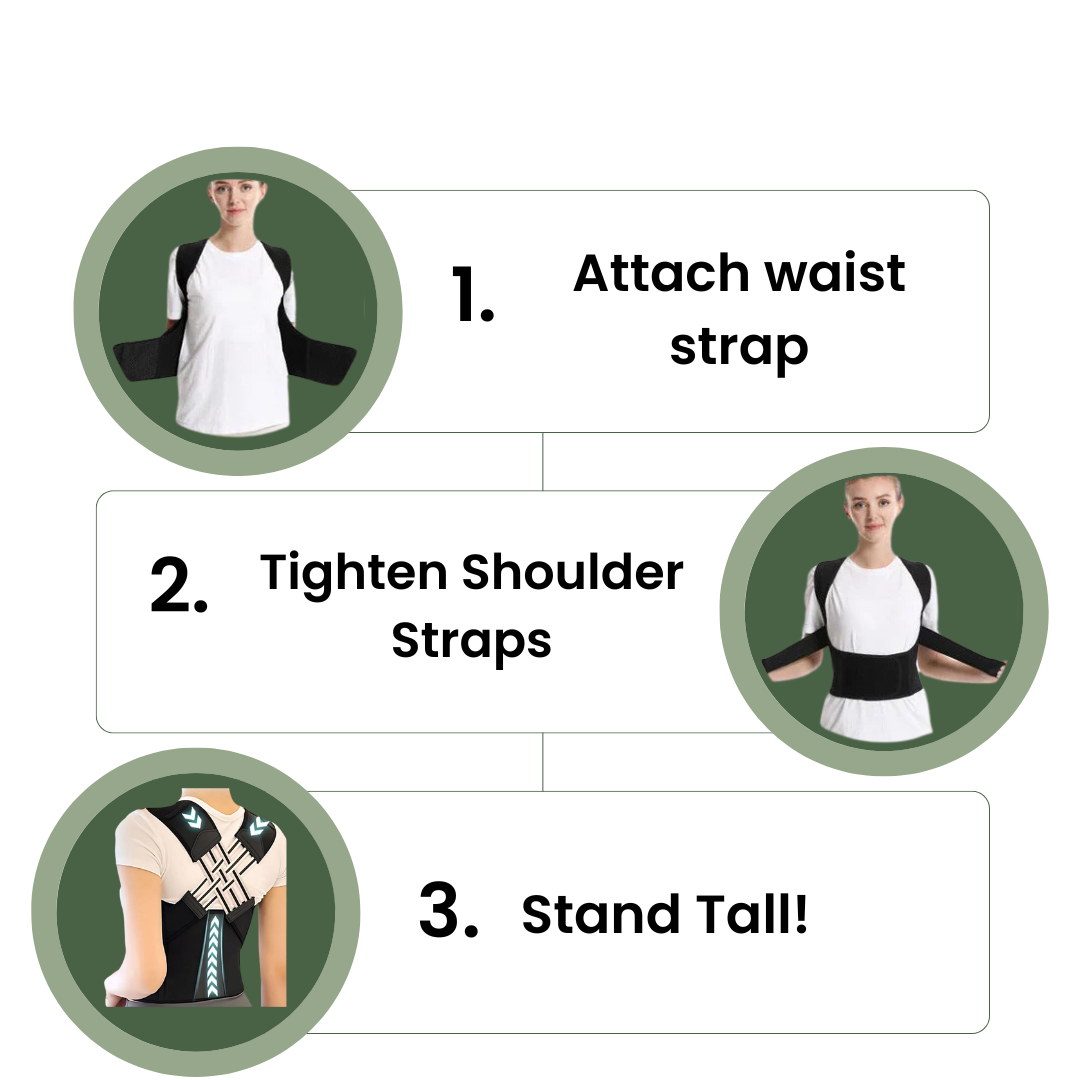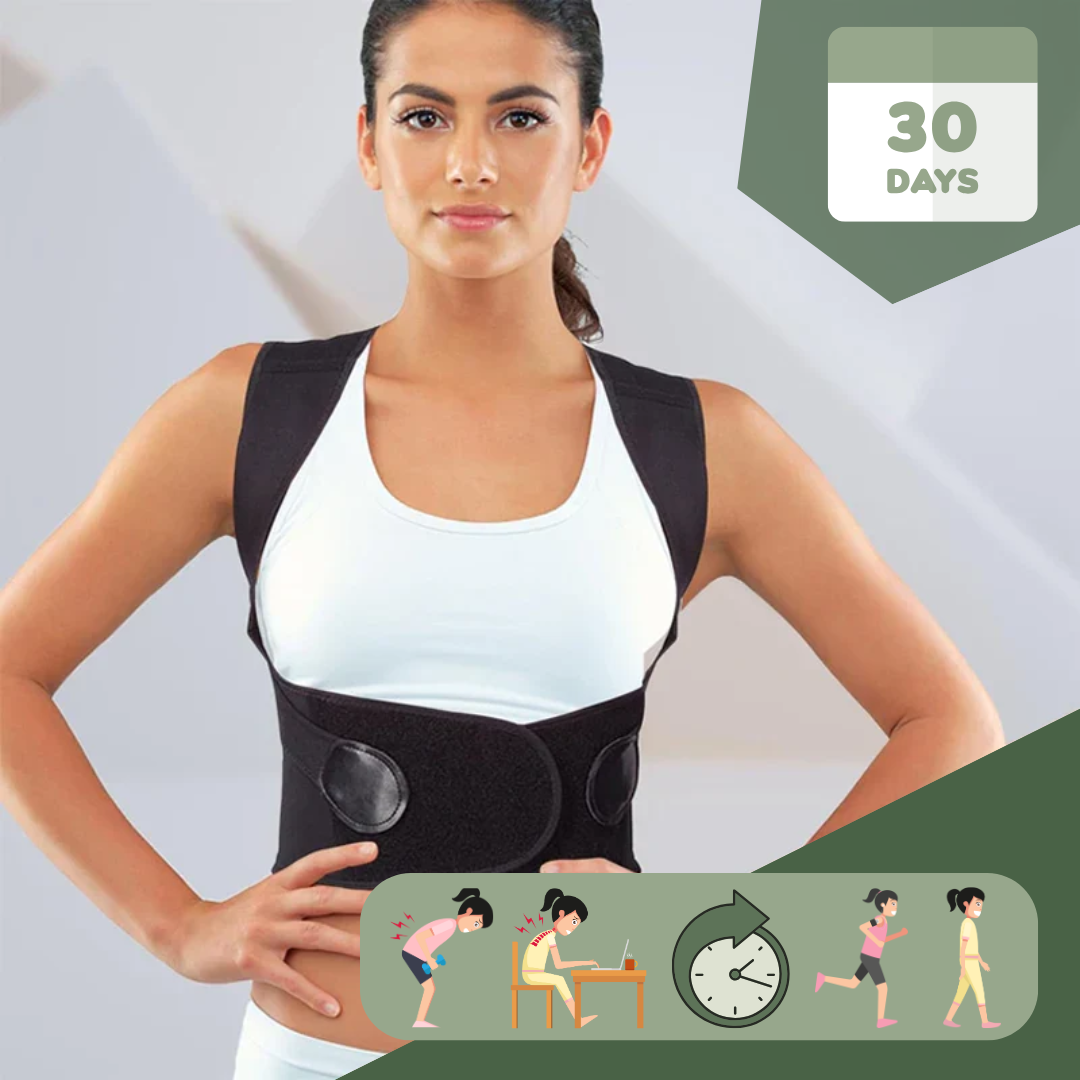Many people struggle with poor posture. Good posture is key for our health, beyond just how we look. This guide, "How to Improve Posture: Step-by-Step Guide," will show you ways to achieve better alignment and correct bad habits.
Let’s get started!
Key Takeaways
- Good posture is vital for health, affecting both appearance and body function. It involves strength, mobility, and balance.
- Simple adjustments throughout the day improve alignment. This includes using a standing desk and doing specific exercises like push-ups, planks, and shoulder presses.
- Poor habits like slumping at a desk or sleeping in the wrong position negatively impact posture. Making small changes can correct these bad habits over time.
- Consulting a physical therapist can help identify personal issues with posture and provide tailored exercises for improvement.
- Wearing proper footwear without thick soles supports good posture by maintaining natural foot alignment and weight distribution.
Understanding the Importance of Good Posture
Good posture is vital for long-term health. It affects not just how we look but also how our bodies function. Achieving good posture requires strength, joint mobility, and balance.
Maintaining proper alignment keeps the spine healthy and reduces muscle strain. Poor posture can lead to pain in the back and neck over time.
Awareness of body position plays a key role in correcting bad habits. Simple adjustments like tucking in your chin and keeping your ears aligned with your shoulders make a difference.
Using a standing desk helps reduce sedentary time while encouraging better spinal alignment. Posture exercises strengthen muscles and improve overall stability, making it easier to maintain correct body posture throughout daily activities.
Tips for Improving Posture
To improve your posture, focus on specific exercises that strengthen your upper body and core. Make small adjustments throughout the day to maintain better alignment while sitting or standing.
Perform Upper Body Exercises
Upper body exercises play a vital role in correcting posture. They build strength and support proper alignment, which is essential for long-term health. Focus on exercises that target the shoulders, chest, and back.
Strengthening these areas helps maintain good posture while sitting or standing.
Incorporate push-ups, pull-ups, and shoulder presses into your routine. Perform these exercises several times a week for best results. Regular practice can improve spine alignment and boost your overall posture improvement efforts.
Use resistance bands or weights to enhance upper body workouts too. By engaging in these activities, you will support better body posture improvement over time.
Strengthen Your Abdominal Muscles
Strong abdominal muscles support good posture. They help maintain proper body alignment, especially while sitting or standing. Strengthening these muscles reduces the risk of slumping at your desk.
Try exercises like planks and crunches to build core strength.
Good posture benefits long-term health and appearance. By focusing on your abs, you create a stable foundation for your spine. This stability helps prevent back pain and improves overall balance.
Engage in exercises for posture improvement regularly to see lasting results.
Make Small Improvements Throughout the Day

Small changes can significantly improve your posture. Take regular breaks from sitting. Stand up and stretch or walk around for a few minutes every hour. Adjust your workspace to ensure good posture while you sit.
Hold your head straight, tuck in your chin, and keep your ears over your shoulders.
Pay attention to how you carry yourself throughout the day. Keep proper foot alignment and distribute weight evenly on both feet when standing. These small improvements contribute to better alignment and help correct bad posture over time.
Staying aware of these habits is key to maintaining proper posture while working or resting.
Use a Standing Desk
Using a standing desk can significantly improve posture. It encourages you to maintain an upright position, which helps align your head, neck, and spine. Standing desks reduce the risk of slumping at your desk.
This device also promotes better weight distribution across your feet.
Switching between sitting and standing keeps the body active. You can avoid long periods of sitting that negatively impact posture. Incorporating a standing desk supports good posture habits while working.
Try using it for part of your day to experience the benefits of good posture firsthand.
Common Habits That Negatively Affect Posture
Poor habits significantly harm your posture. Slumping at a desk can lead to discomfort and misalignment over time. Sleeping in the wrong position may cause strain on your back and neck as well.
Wearing shoes with thick soles often alters your natural stance, contributing to bad posture.
Slumping at Your Desk
Slumping at your desk can harm your posture. This common habit often leads to long-term health issues. Good posture is crucial for overall well-being, not just appearance. Maintaining the head straight and ears over the shoulders promotes better alignment.
Strengthening your abdominal muscles helps support an upright position.
Take breaks frequently to stand or stretch. Using a standing desk reduces the time spent sitting and improves posture significantly. Small adjustments throughout the day can create lasting results in correcting bad posture while working at a desk.
Simple awareness of how you sit will lead to improvements over time.
Sleeping in the Wrong Position
Sleeping in the wrong position can harm your posture. Poor sleep alignment often leads to muscle strain and discomfort. Many people sleep on their stomachs, which twists the neck. This practice may cause long-term issues with posture correction.
Sleeping on your side or back usually supports better spine alignment.
Proper foot alignment and weight distribution matter during sleep too. Choose a mattress and pillow that provide good support for your body type. Using these guidelines will help improve posture over time.
Good posture contributes to overall health, not just appearance, so consider how you rest each night.
Wearing Shoes With Thick Soles
Wearing shoes with thick soles can harm your posture. These shoes often change how you stand and walk. They may lead to improper foot alignment and weight distribution. Poor alignment creates tension in your body, affecting joints and muscles.
Good posture tips advise keeping the feet flat on the ground for better balance.
To improve posture for women, select footwear wisely. Choose shoes that offer support without excessive thickness. Prioritize comfort and stability over style alone. Focus on proper foot placement when standing or walking to maintain good posture throughout the day.
Consulting a Physical Therapist for Posture Correction
Consulting a physical therapist for posture correction offers great benefits. These professionals help identify your specific posture issues. They create personalized exercises to improve alignment and strength.
A therapist can also guide you on proper foot alignment and weight distribution, which are essential for good posture.
Many people struggle with correcting sitting posture or standing posture on their own. Physical therapists understand the importance of good posture beyond appearance. They teach effective posture improvement techniques that incorporate upper body exercises and abdominal workouts.
With their support, you can develop better habits that enhance long-term health and well-being.
Conclusion
Improving your posture takes effort and awareness. Start with simple exercises each day to strengthen your core and upper body. Keep your head straight and avoid slumping while sitting.
Remember, small changes can lead to big improvements over time. Better posture enhances health and boosts confidence.
FAQs
1. What are some methods to correct my posture?
Posture correction methods can range from alignment exercises, practicing good posture habits, and even specific gym workouts designed for improving posture.
2. How can women specifically improve their postures?
Improving posture for women follows the same general principles of alignment techniques and correcting habits but may include certain exercises tailored to common issues faced by women.
3. Can you give examples of what good posture looks like?
Good posture involves different types depending on the activity, such as sitting or standing straight with shoulders pulled back slightly or maintaining a neutral spine during physical activities.
4. Are there any exercises I can do at the gym that could help me better align my body?
Yes, there are specific posture exercises available for the gym that target key muscle groups responsible for maintaining proper body alignment.



















